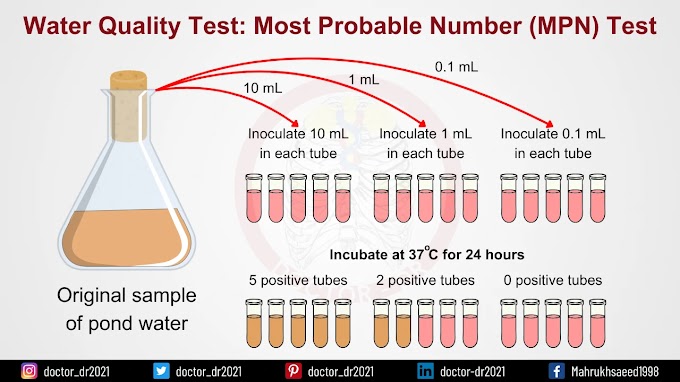Table of Content:
- Introduction
- What is BLAST?
- Types of BLAST
- How BLAST Works: Step-by-Step Process
- Key Characteristics of BLAST
- Applications of BLAST
- Conclusion
- References
Introduction
With the rapid expansion of DNA and protein sequence databases, there is an increasing demand for faster and more efficient computational tools to analyze this vast amount of biological data. One of the most widely used bioinformatics tools designed for comparing DNA and protein sequences is BLAST (Basic Local Alignment Search Tool). This tool plays a crucial role in sequence similarity searches, making it indispensable for various biological and computational analyses.
BLAST was first introduced by Stephen Altschul et al. in 1990, and since then, it has undergone multiple advancements to enhance its speed, accuracy, and usability. Today, BLAST is regarded as one of the most powerful tools for biological sequence analysis, facilitating numerous research studies and contributing significantly to genomics and proteomics.
What is BLAST?
BLAST (Basic Local Alignment Search Tool) is an algorithm used to compare a given query sequence against a database of known sequences. It efficiently identifies regions of local similarity and provides statistical significance for the matches found. Unlike global alignment algorithms that attempt to align entire sequences, BLAST focuses on finding highly similar segments (local alignments), making it more efficient for large-scale sequence searches.
Since its introduction, BLAST has become a cornerstone of bioinformatics research and is integrated into multiple platforms, including the National Center for Biotechnology Information (NCBI) database, where it is widely used for genome annotation, functional prediction, and evolutionary analysis.
Types of BLAST
BLAST is categorized into five major variants, each designed to handle different types of sequence comparisons:
1. BLASTN
-
Compares a nucleotide query sequence against a nucleotide sequence database.
-
Useful for identifying homologous genes, detecting mutations, and analyzing non-coding DNA sequences.
2. BLASTP
-
Compares a protein query sequence against a protein sequence database.
-
Helps in identifying functionally similar proteins, evolutionary relationships, and conserved domains.
3. BLASTX
-
Compares a nucleotide query sequence (translated into protein sequences in all six reading frames) against a protein sequence database.
-
Useful for predicting protein-coding regions in genomic sequences and identifying potential protein functions.
4. TBLASTN
-
Compares a protein query sequence against a nucleotide sequence database by translating the nucleotide sequences into protein sequences in all six reading frames.
-
Used for identifying homologous protein sequences in newly sequenced genomes.
5. TBLASTX
-
Compares a nucleotide query sequence (translated into all six reading frames) against a nucleotide sequence database (also translated into six reading frames).
-
Useful for identifying distant evolutionary relationships when both the query and database sequences lack known protein translations.
How BLAST Works: Step-by-Step Process
BLAST follows a heuristic approach to find sequence similarities efficiently. The algorithm works through a sequence of steps that progressively refine the search to provide highly accurate results. The process can be broken down into the following key stages:
Step 1: Seeding (Creating a Lookup Table)
-
The algorithm begins by breaking the query sequence into short fragments known as words.
-
Typically, for protein sequences, each word is three amino acids long, while for DNA sequences, each word is eleven nucleotides long.
-
These words are then used as seeds to search for potential matches in the database.
Step 2: Searching for Matching Words
-
The lookup table is compared against sequences in the database to identify potentially similar regions.
-
Only sequences containing at least one identical or highly similar word are selected for further analysis, reducing computational time.
Step 3: Scoring and Filtering
-
The algorithm assigns a score to each word match based on substitution matrices.
-
Commonly used scoring matrices include:
-
PAM (Percent Accepted Mutations) and BLOSUM (Blocks Substitution Matrix) for protein sequences.
-
Match-Mismatch scoring for nucleotide sequences.
-
-
Sequences scoring above a predefined threshold are considered significant and move to the next step.
Step 4: Extending Alignments
-
Matched sequences are extended in both directions to form high-scoring segment pairs (HSPs).
-
The extension stops when the alignment score drops below a threshold, ensuring that only high-confidence matches are retained.
Step 5: Statistical Significance and E-value Calculation
-
BLAST calculates an E-value (Expect Value), which represents the probability that a match occurred by random chance.
-
A lower E-value indicates a more statistically significant match.
Key Characteristics of BLAST
BLAST is a widely adopted bioinformatics tool due to its efficiency, versatility, and ease of use. Its key features include:
-
High Speed and Efficiency: Uses a heuristic approach to process large datasets quickly.
-
Flexibility: Can analyze both nucleotide and protein sequences.
-
Sensitivity: Detects even low-similarity sequences, aiding in evolutionary and functional analysis.
-
Local Alignment Focus: Targets regions of high similarity rather than aligning entire sequences.
-
User-Friendly Interface: Available through NCBI BLAST, making it accessible to researchers worldwide.
Applications of BLAST
BLAST is an essential tool in bioinformatics with numerous applications in biological research. Some of its most significant uses include:
1. Sequence Identification
-
Helps in identifying unknown DNA or protein sequences by comparing them against known databases.
-
Useful for gene annotation and functional prediction.
2. Phylogenetic Analysis
-
Used to determine evolutionary relationships between organisms.
-
Helps in classifying newly discovered species based on genetic similarities.
3. Functional Annotation of Proteins
-
Identifies conserved protein domains and predicts potential functions of newly sequenced genes.
4. Comparative Genomics
-
Enables genome-wide comparisons to detect similarities, variations, and evolutionary changes.
5. Biomedical Research
-
Used in disease research to find mutations and identify disease-related genes.
-
Helps in designing targeted drug therapies by analyzing pathogen genomes.
Conclusion
BLAST is an indispensable tool in modern bioinformatics, providing researchers with a fast and efficient way to analyze biological sequences. Its ability to rapidly compare sequences, detect evolutionary relationships, and aid in functional genomics makes it one of the most widely used computational tools in molecular biology. As genomic databases continue to expand, BLAST will remain at the forefront of sequence analysis, driving advancements in research and biotechnology.
References
-
BLAST QuickStart – Comparative Genomics – NCBI Bookshelf (nih.gov)
-
BLAST: Basic Local Alignment Search Tool (nih.gov)
-
McGinnis, S., & Madden, T. L. (2004). BLAST: At the core of a powerful and diverse set of sequence analysis tools. Nucleic Acids Research, 32(Web Server issue), W20. https://doi.org/10.1093/nar/gkh435
-
Xiong, J. (2006). Essential Bioinformatics. Cambridge University Press.








